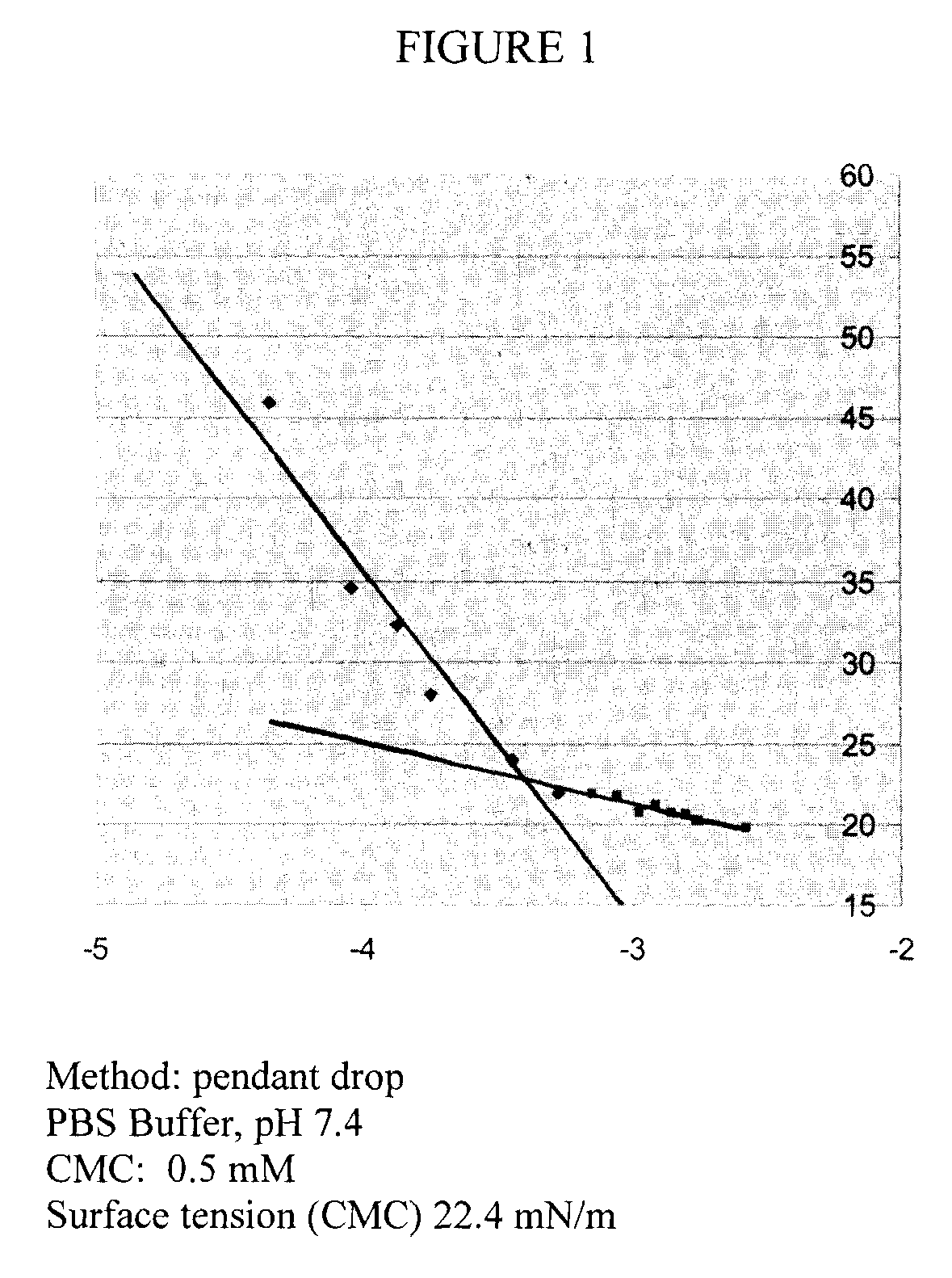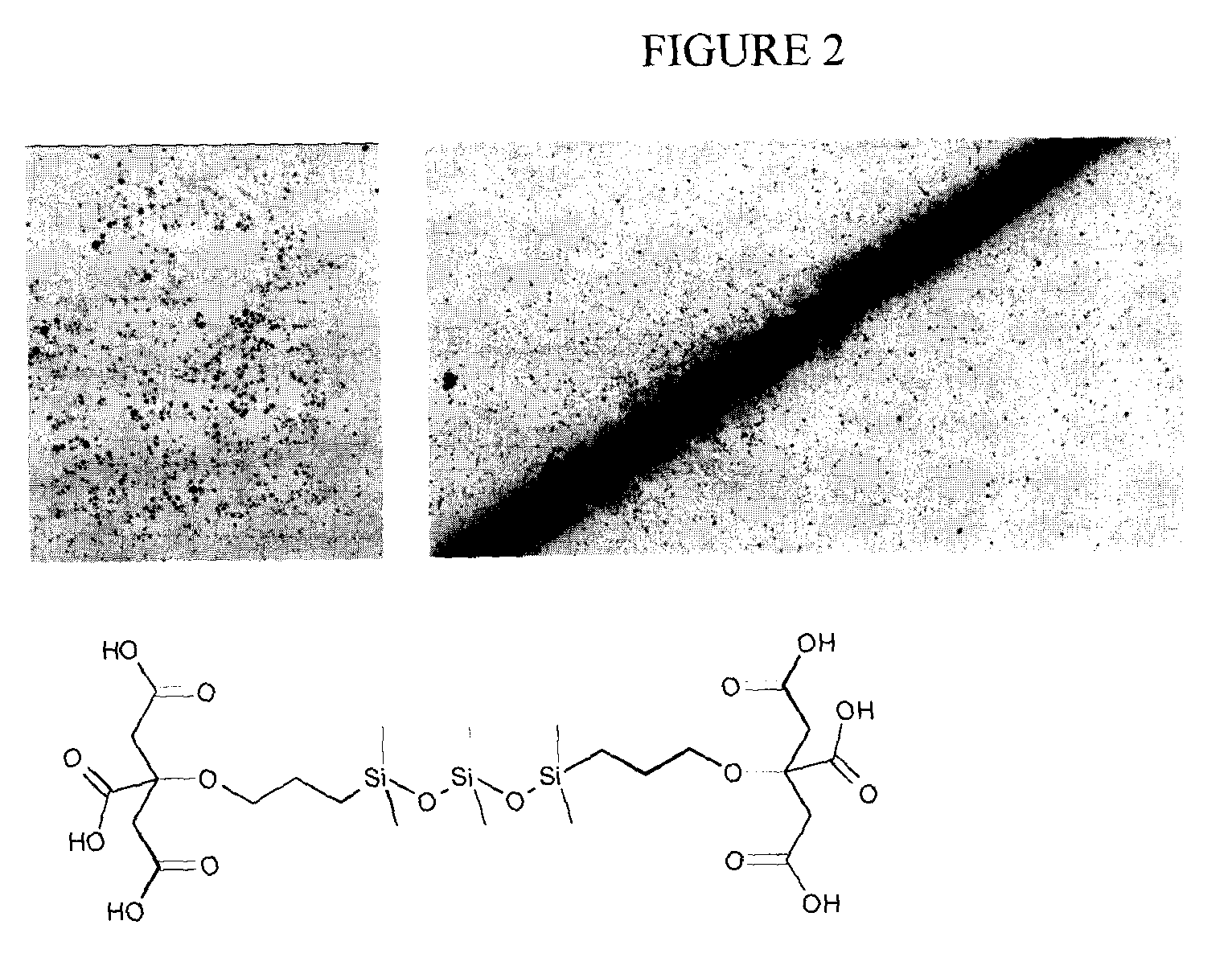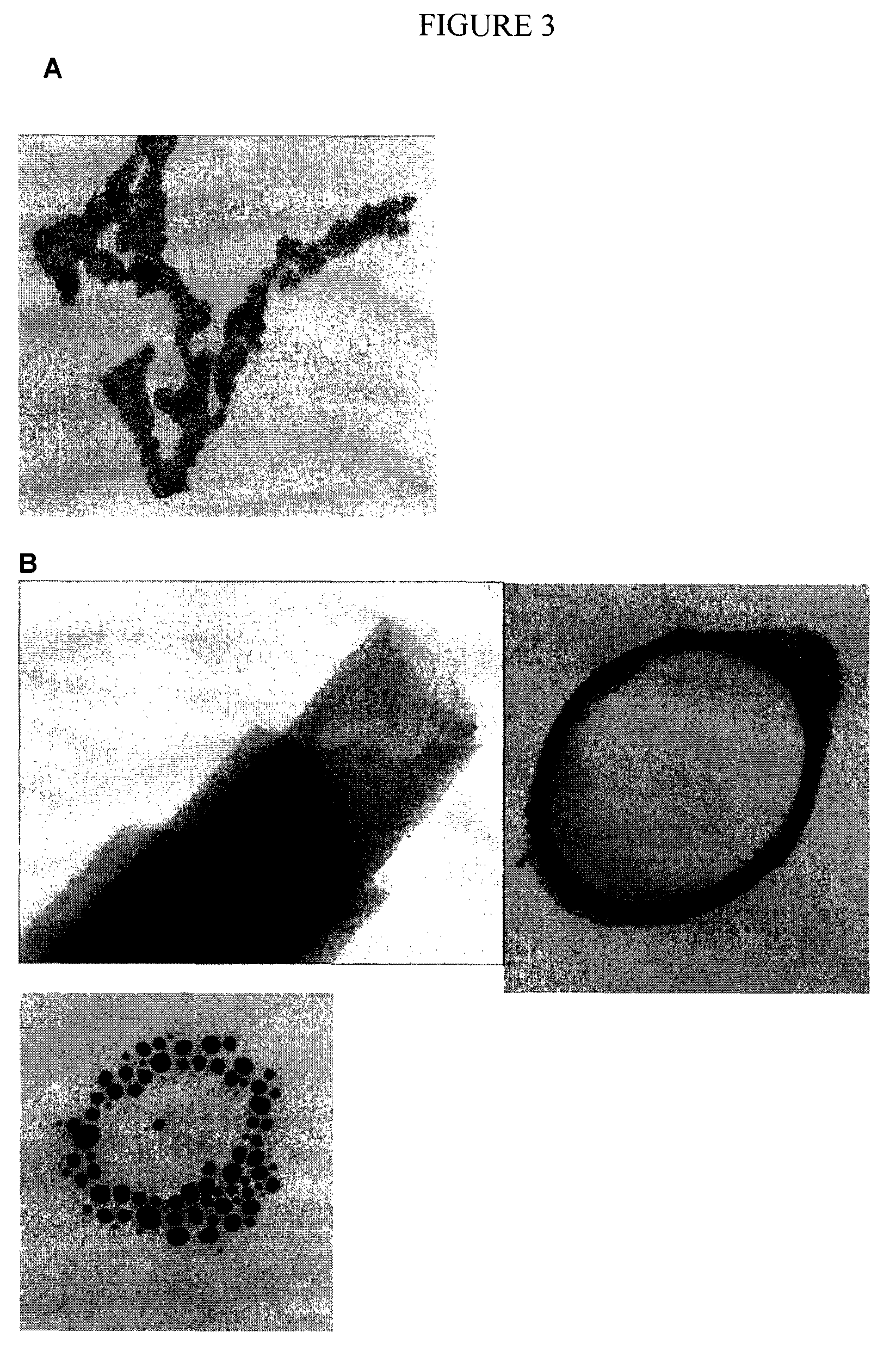Chelating silicon-based polymers
a technology of silicon-based polymers and chelating agents, which is applied in the field of silicon-based polymers, can solve the problems of inability to easily change the surface activity of silicones, the inability to use the same set of synthetic tools, and the inability to generate broad range of nanostructures for specific applications, so as to facilitate the reduction of selected metal ions, reduce metal ions, and reduce metal ions
- Summary
- Abstract
- Description
- Claims
- Application Information
AI Technical Summary
Benefits of technology
Problems solved by technology
Method used
Image
Examples
example 1
Preparation of 3-benzyloxycarbonyl-3-(triethoxysilylpropyloxy)-pentanedioic Acid Dimethyl Ester
(i) Preparation of 3-hydroxy-pentanedioic acid dibenzyl 3-benzyloxycarbonyl Ester
[0088]
[0089]Citric acid (9.00 g, 46.8 mmol), benzyl alcohol (15.4 mL, 128.0 mmol) and toluene were placed in a 250 mL round-bottom flask. A catalytic amount of pTSA (0.10 g) was added and the reaction mixture was then stirred and refluxed with azeotropic removal of the water produced during the ester formation (Dean-Stark). After 18 hours, the mixture was allowed to cool to room temperature. The solvent and unreacted benzyl alcohol were removed in vacuo. The residue was dissolved in EtOAc and washed twice with saturated aqueous NaHCO3, twice with water, and finally twice with brine. The organic phase was dried over Na2SO4 and the solvent was removed under reduced pressure, leaving an oily substance which subsequently crystallized slowly at room temperature. Recrystallization in Hexanes / EtOAc (95:5) afforded 21...
example 2
Preparation of 3-methoxycarbonyl-3-(triethoxysilylpropyloxy)-pentanedioic Acid Dimethyl Ester
(i) Preparation of 3-hydroxy-3-methoxycarbonyl-pentanedioic Acid Dimethyl Ester
[0094]
[0095]To a stirred solution of citric acid (9.00 g, 46.8 mmol) in absolute methanol at 0° C. under a nitrogen atmosphere, thionyl chloride (20.50 mL, 0.28 mol) was carefully added. The reaction mixture was stirred at 0° C. for an hour then at room temperature overnight. The volatiles were then removed in vacuo. The residual solid was recrystallized from hexane / ethylacetate to yield 10.80 g (98%) of the title compound as white crystals. 1H NMR (Acetone-d6, 200 MHz): δ 2.85 (dd, 4H, J1=15.4 Hz, J2=27.2 Hz); 3.60 (s, 6H); 3.72 (s, 3H); 4.50 (br.s, 1H). 13C NMR (Acetone-d6, 200 MHz): δ 43.60; 51.73; 52.74; 73.97; 170.55; 174.12. MS: ES-positive mode (m / z): 235.1 (M+H+), calculated: M+=234.21.
(ii) Preparation of 3-allyloxy-3-methoxycarbonyl-pentanedioic Acid Dimethyl Ester
[0096]
[0097]3-Allyloxy-3-methoxycarbonyl-...
example 3
Preparation of Si-5-benzyl Ester
[0100]
[0101]The general procedure in Example 1(iii) was followed. The characterization data for Si-5-benzyl ester is as follows. 1H NMR (CDCl3, 200 MHz): δ 0.05 (m, 33H); 0.37 (m, 2H); 1.43 (m, 2H); 3.16 (dd, 4H, J1=15.7 Hz, J2=33.6 Hz); 3.35 (t, 2H, J=6.9 Hz); 5.06 (s, 4H); 5.10 (s, 2H); 7.31 (br.s, 15H). 13C NMR (CDCl3, 200 MHz): δ 0.82; 1.93; 2.56; 14.66; 24.31; 39.82; 67.17; 67.99; 68.15; 79.11; 128.95; 129.12; 129.25; 136.06; 136.35; 170.43; 171.19. MS: ES-positive mode: (m / z): 890.7 (M+NH4+), calculated: M=873.39.
PUM
| Property | Measurement | Unit |
|---|---|---|
| thicknesses | aaaaa | aaaaa |
| lattice spacing | aaaaa | aaaaa |
| thickness | aaaaa | aaaaa |
Abstract
Description
Claims
Application Information
 Login to View More
Login to View More - R&D
- Intellectual Property
- Life Sciences
- Materials
- Tech Scout
- Unparalleled Data Quality
- Higher Quality Content
- 60% Fewer Hallucinations
Browse by: Latest US Patents, China's latest patents, Technical Efficacy Thesaurus, Application Domain, Technology Topic, Popular Technical Reports.
© 2025 PatSnap. All rights reserved.Legal|Privacy policy|Modern Slavery Act Transparency Statement|Sitemap|About US| Contact US: help@patsnap.com



